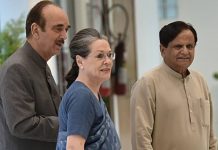The Peninsular Plateau
- The Peninsular plateau is a tableland composed of the old crystalline, igneous and metamorphic rocks. It was formed due to the breaking and drifting of the Gondwana land. One of the distinct features of the Peninsular plateau is the black soil area known as Deccan Trap.
- This plateau consists of 2 divisions:
- The Central Highlands: The part of the Peninsular plateau lying to the north of the Narmada river, covering a major area of the Malwa plateau, is known as the Central Highlands. The eastward extensions of this plateau are locally known as the Bundelkhand and Baghelkhand.
- The Deccan Plateau: It is a triangular landmass that lies to the south of the river Narmada. An extension of the Plateau is also visible in the northeast, which is known as the Meghalaya, Karbi-Anglong Plateau and North Cachar Hills.
- The Western Ghats and the Eastern Ghats mark the western and the eastern edges of the Deccan Plateau respectively.
Western Ghats Eastern Ghats
- Western Ghats lie parallel to the western coast. The Eastern Ghats stretch from the Mahanadi Valley to the Nigiris in the South.
- They are continuous and can be crossed through passes only. They are discontinuous and irregular. They can be dissected by rivers draining into the Bay of Bengal.
- They are higher than the Eastern Ghats. Their average elevation is 900–1600 metres.
- Their average elevation is 600 metres.
- Anamudi is the highest peak in the Western Ghats.
- Mahendragiri (1,501 metres) is the highest peak in the Eastern Ghats.
The Indian Desert
- The Indian desert lies towards the western margins of the Aravalli Hills.
- It is a sandy plain covered with sand dunes.
- This region receives very low rainfall below 150 mm per year.
- It has a dry climate with low vegetation cover.
The Coastal Plains
A coastal plain is a flat, low-lying piece of land next to the ocean. To the east and west of the peninsular plateau, two narrow strips of plain lands are found, which are respectively called Eastern Coastal Plain and Western Coastal Plain.
- Eastern Coastal Plain
The Eastern Coastal Plains is a wide stretch of the landmass lying between the Eastern Ghats and the Bay of Bengal. In the northern part, it is referred to as the Northern Circar, while the southern part is known as the Coromandel Coast. Large rivers, such as the Mahanadi the Godavari, the Krishna and the Kaveri have formed extensive delta on this coast. Lake Chilka is an important feature along the eastern coast.
- Western Coastal Plain
The western coast is sandwiched between the Western Ghats and the Arabian Sea. It is a narrow plain and consists of 3 sections as mentioned below:
- The northern part of the coast is called the Konkan (Mumbai – Goa)
- The central stretch is called the Kannad Plain
- The southern stretch is referred to as the Malabar coast
The Islands
- An island is a piece of sub-continental land that is surrounded by water. Lakshadweep Islands group is composed of small coral islands which were earlier known as Laccadive, Minicoy and Amindive.
- The entire group of islands is divided into 2 broad categories:
- The Andaman in the north
- The Nicobar in the south
- These islands lie close to the equator and experience equatorial climate and have thick forest cover.
- The diverse physical features of India have immense future possibilities of development because of the following reasons.
- The mountains are the major sources of water and forest wealth.
- The northern plains are the granaries of the country. They provide the base for early civilisations.
- The plateau is a storehouse of minerals, which has played a crucial role in the industrialisation of India.
- The coastal region and island groups provide sites for fishing and port activities



































